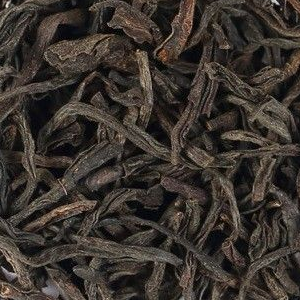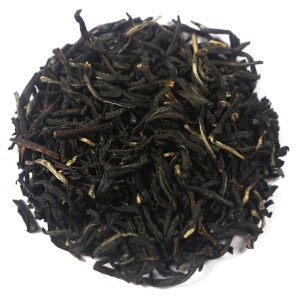Ceylon Tea
Ceylon tea comes from the verdant hills of Sri Lanka. It is a prised variety of black tea, known for its rich heritage and superior quality. Exportation dates back to the 19th century. The tea leaves flourish there. The conditions are exceptional and unique to the region. This contributes to their high grade.
Its light and tangy flavor is unusual. It sets Ceylon Black Tea apart from other teas. Health aficionados particularly value this variety for its impressive array of benefits. Also, Ceylon tea contains potent antioxidants called polyphenols.
Showing 1–12 of 64 results
-
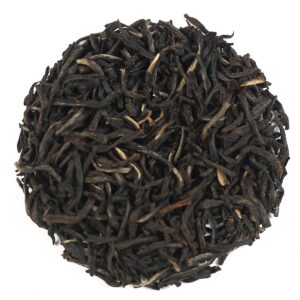
Ceylon Extra Special Tea FBOPFEXSP
From £3.55— or subscribe and save 10%Select options This product has multiple variants. The options may be chosen on the product page -
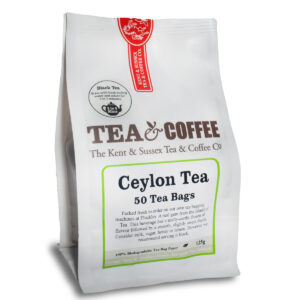
Ceylon Tea Bags
£3.05— or subscribe and save 10%Add to basket -
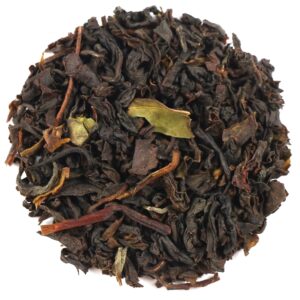
Ceylon Court Lodge Estate Tea FBOP
From £3.84— or subscribe and save 10%Select options This product has multiple variants. The options may be chosen on the product page -
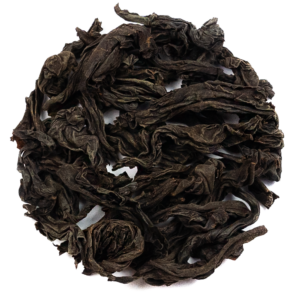
Moragalla Ceylon Oolong Tea
From £2.78— or subscribe and save 10%Select options This product has multiple variants. The options may be chosen on the product page -
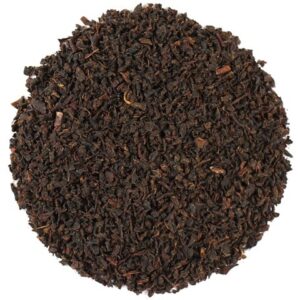
Ceylon Tea Dimbula Broken Orange Pekoe
From £2.67— or subscribe and save 10%Select options This product has multiple variants. The options may be chosen on the product page -
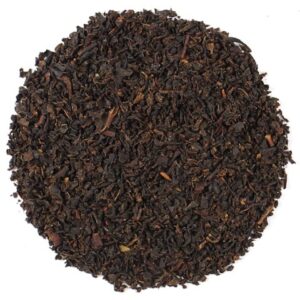
Ceylon Tea Kandy Broken Orange Pekoe
From £2.72— or subscribe and save 10%Select options This product has multiple variants. The options may be chosen on the product page -
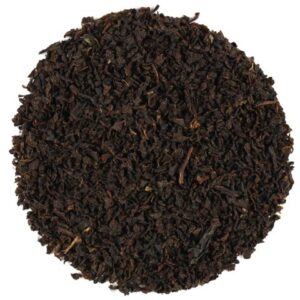
Ceylon Tea Uva Broken Orange Pekoe
From £3.58— or subscribe and save 10%Select options This product has multiple variants. The options may be chosen on the product page -
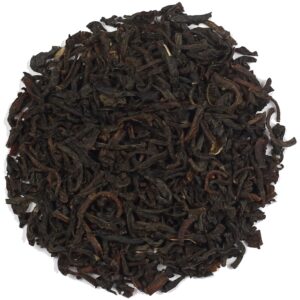
Ceylon Kenilworth Estate Nuwara Eliya Tea
From £3.09— or subscribe and save 10%Select options This product has multiple variants. The options may be chosen on the product page -
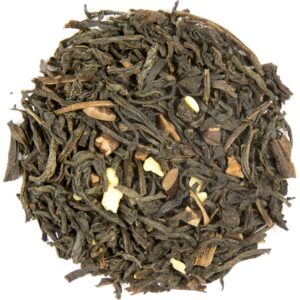
Black Cherry and Dark Chocolate Tea
From £3.81— or subscribe and save 10%Select options This product has multiple variants. The options may be chosen on the product page -
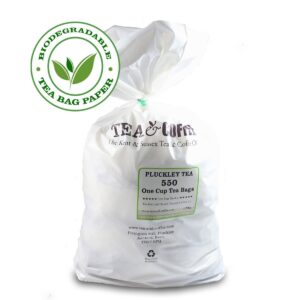
Pluckley Tea 550 One Cup Tea Bags
£13.19— or subscribe and save 10%Add to basket
What is Ceylon Tea?
Referring to the esteemed black tea. It is cultivated on the small island nation of Sri Lanka, formerly known as Ceylon. Sri Lanka’s tea industry has a storied history. It began in the 19th century and has a reputation for producing some of the finest teas in the world. The island has a rich and diverse topography. It encompasses a wide range of altitude, climate, and soil conditions. This creates an ideal environment for the Camellia sinensis plant. Tea is derived from this plant.
Sri Lankan Orange Pekoe is a grade of Ceylon Tea. It is celebrated for its boldness, fullness, and brisk finish. These are qualities that distinguish it globally and cannot be replicated elsewhere. The production involves careful handpicking and handcrafting the tea leaves. This results in the distinctive wiry appearance of loose leaf Ceylon tea.
This painstaking method ensures a lively and unique flavour profile. It secures Ceylon Tea’s position as a leader among teas worldwide. You can serve it in many forms, such as hot tea, iced tea, and as a base for cocktails. The variety of Ceylon Tea also extends beyond black tea to include white, green, and oolong teas.
History of Ceylon Tea
The history of Ceylon Tea begins with a devastating plant disease. It struck the coffee plantations of Sri Lanka in the 1860s. As a result, the British colonial planters began to experiment with tea plants. In 1867, a British planter named James Taylor successfully planted the first tea estate in Kandy. This marked the birth of the Ceylon tea industry. Taylor’s initial 19 acres of tea gradually increased. Planters saw the potential of tea as a replacement for coffee beans, and began to plant more.
Taylor began the first fully operational tea factory on the island in 1872. He used methods he had learned in China. The first shipment of Ceylon black tea arrived at the London Tea Auction in 1873. This established an international market. The expansion was rapid. By the end of the 19th century, Ceylon had become a major global tea producer.
The evolution continued throughout the 20th century. It continued even after Sri Lanka gained independence from British rule in 1948. The industry was nationalised in the 1970s. This brought significant change. It included creating the Sri Lanka Tea Board and the Ceylon Tea Propaganda Board.
Today, Sri Lanka remains one of the world’s leading tea exporters. It has over 200,000 hectares of tea plantations. They are in the central highlands and southern inland areas of the island. Annual tea production now exceeds 300 million kilograms. These carefully maintained tea plantations contribute not only to the local economy. They also define the picturesque landscapes of Sri Lanka. They also sustain and elevate the legacy of Ceylon Tea on the global stage.
Growing Regions in Sri Lanka
Tea estates cover an estimated 4% of Sri Lanka’s landmass. This has earned the country the nickname “Island of Tea.” The growing regions are mainly on flat plains, especially in the south. In other areas, mountains ascend to heights of 2,400 metres. It is in these elevated regions that the most prised tea is said to originate.
The tea industry employs nearly 5% of the population, around one million people. They harvest and process the leaves. Workers are busiest between June and August in the east, and from early February to mid-March in the west.
Each region imparts distinct characteristics to its tea. The primary districts are Kandy, Nuwara Eliya, Uva, Dimbula, and Ruhunu/Ratnapura.
- Kandy: The birthplace of Ceylon Tea. It is situated on the northern side of the Central Highlands at altitudes around 1,200 metres. Kandy was the original home of Ceylon Loose Tea. It produces what can be described as “mid-grown” teas, mostly on the western slopes of the hills. The teas from this district are strong and robust in flavour.
- Nuwara Eliya: Highest region in Sri Lanka, at elevations near 1,800 metres. Its teas reflect this altitude. They are known for their delicate, floral fragrances and a light, brisk flavour. The quality is often considered the epitome of this.
- Uva: Technically a province. It is a key player in tea production. The estates are 900 to 1,500 meters above sea level. Uva’s teas are celebrated for their unique, sweet, and woody flavors. Despite being less densely populated.
- Dimbula: A region producing “high-grown” tea. It is nestled between high plateaus in the Central Province and named after the valley at its centre. Tea enthusiasts enjoy the refreshingly mellow notes that characterise teas.
- Ruhunu/Ratnapura: This region is known for its low hills, fertile soils, and favourable microclimate. It may not be as famous as Kandy or Nuwara Eliya, but it boasts a robust, bold-flavoured tea that commands respect. Tea production in Ruhuna/Ratnapura began in the 20th century. This happened later than in other areas. Its produce has carved out a niche in the industry thanks to its distinct taste profile.
Tea from each of these regions plays a significant part in maintaining Sri Lanka’s reputation. It is known for producing high-quality Ceylon tea. It celebrates diversity in both environment and flavour.
Assam Tea vs Ceylon Tea
Hailing from the diverse landscapes of Sri Lanka. Assam Tea is the largest tea-producing region in India. The valley is situated along the Brahmaputra River. Assam Tea is renowned for its bold, brisk, and malty flavors. It’s often described as tannic. This makes it a popular choice for breakfast teas. It is notably in the classic English Breakfast Tea Bags blend.
Geographically, the Assam region experiences high precipitation, especially during the monsoon season. The high humidity and greenhouse-like conditions are year round. They make Assam Tea’s profile distinct. This contrasts with the varied elevations and climates. These are found in the tea-growing regions of Sri Lanka.
This gives Assam Tea a full-bodied nature. In contrast, Ceylon Tea has more nuanced flavors. Flavours can range from strong and full-bodied too delicate and floral. It depends on where on the island it’s grown.
Production volumes between the two regions also bear differences. Assam is one of the world’s most prolific tea-growing areas. Its tea yield often surpasses Sri Lanka’s annual production. Sri Lanka produces around 300 million kilograms of tea each year. Tea gardens in Assam cover about 312,210 hectares. They produce over 500 million kilograms of tea.
Culturally and historically, both regions have deep-rooted connections to colonial eras. The British ruled Assam. The British and Dutch ruled Sri Lanka. This shaped their development and reputation in the international tea market. Indigenous people often harvested Assam Tea. They did this before the British improved its production. It was internationally recognised in 1837. Ceylon Tea was established in the 1860s. This happened after coffee plantations in Sri Lanka collapsed.
Both teas enjoy a global reputation. It contributes a lot to India’s status. India is one of the world’s top tea producers. Meanwhile, Ceylon Tea remains a hallmark of quality and tradition. Tea connoisseurs across the globe celebrate its profiles.
How to Make Ceylon Tea
To fully enjoy the subtle tastes of Ceylon Loose Leaf Tea, you must use proper brewing techniques. Here’s a comprehensive guide to help you make the perfect cup:
- Measure the Tealeaves: Use about one teaspoon of tea leaves for every 200 ml (7 oz) of water. Adjust this amount based on your preferred strength.
- Heat the Water: Bring fresh, cold water to a boil. For black Ceylon teas, use water at 95-100°C. If you don’t have a thermometer, let boiling water cool a minute to reach this range.
- Warm the Teapot: Pour some heated water into your teapot and swirl it around to warm the pot. Discard this water before adding your tea leaves. This process helps maintain the brewing temperature.
- Steep the Tea: Add the tea leaves to the pot, pour in the hot water, and let it steep. For black Ceylon tea, the ideal steeping time is between 3 to 5 minutes. Adjust this to suit your preference for strength and astringency. Avoid overstepping, as it can lead to an overly tannic and bitter taste.
- Strain and Serve: After steeping, strain the tea into cups to remove the leaves. This prevents further steeping. You can use a tea strainer or pour through a sieve to catch the leaves.
- Customise Your Cup: Enjoy the tea plain to appreciate its full range of flavours. Or, add a touch of milk, lemon, or sweetener according to your taste.
Tips to Enhance Your Ceylon Loose Tea Experience:
- Always use fresh water to make tea, as reboiled water can make the tea taste flat.
- Store your Ceylon Loose Leaf Tea in an airtight container. Keep it away from light, moisture, and strong odours to preserve its quality.
- If you prefer iced tea, steep the tea as above. Allow it to cool to room temperature before refrigerating. Pour over ice and serve with a slice of lemon or a sprig of mint.
- Experiment with the steeping time to find your perfect balance. Consider both strength and astringency. Personal preferences vary widely.
- Consider the time of day and your desired experience when selecting a region. A bold Kandy tea is robust enough for the morning. A lighter Nuwara Eliya tea might suit an afternoon better.
- Follow these steps and tips to craft a delightful cup of Ceylon Tea. It will be both invigorating and a pleasure to the senses.
Tasting Notes
- Kandy tea: bold and robust with a malty finish.
- Nuwara Eliya tea: light and delicate, with floral notes.
- Ruhuna/Ratnapura tea: robust, bold-flavoured with a distinct taste profile.
- Dimbula: a well-balanced tea with a bright, golden cup and a smooth taste.
- Uva: full-bodied and rich, with hints of chocolate and fruit flavours.
The wine’s profile depends on the region. It can range from delicate and floral too bold and full-bodied. It’s no wonder that Ceylon Tea is celebrated for its diverse environment and flavor. Whether you’re a seasoned tea drinker or just starting to discover the world of tea, include Ceylon Tea in your repertoire.
How Much Caffeine in Ceylon Tea
Like all black teas, it contains caffeine. Caffeine is a natural stimulant. It can temporarily enhance alertness and reduce fatigue. The caffeine content in Ceylon Tea can vary based on several factors. These factors include the growing region and the processing method. Importantly, they also include the brewing time.
An average cup of Ceylon Tea may contain 50 to 90 milligrams of caffeine per 8-ounce serving. It is noteworthy that the longer the tea is steeped, the more caffeine will be infused into the cup.
Adding milk to your tea does not change the caffeine content. Yet, it may alter your perception of its strength and flavour. Milk proteins can bind to some tea compounds, including tannins. This creates a smoother taste. This might be seen as having a milder effect on the body.
Below is an illustrative table. It outlines how different brewing times influence the amount of caffeine in a cup of Ceylon Tea. Please note these values are illustrations, and actual caffeine content can vary.
- 1 Minutes Steeping 30-50 mg per 8 oz cup
- 2 Minutes Steeping 40-60 mg per 8 oz cup
- Minutes Steeping 50-70mg per 8 oz cup
- 4 Minutes Steeping 60-80 mg per 8 oz cup
- 5 Minutes Steeping 70-90 mg per 8 oz cup
Keep in mind: each person’s brewing and tea type will change the caffeine content. To manage caffeine intake, one may opt to steep the tea for a shorter period. Or, they can choose a tea from a region. This region is known for producing lighter varieties. For example, Nuwara Eliya.
Ceylon Tea Benefits
Ceylon Tea is famous for its diverse flavors and aromas. It also has many health benefits. It is noted for its high antioxidants. They can combat free radicals in the body. They also promote cell health and cut the risk of chronic disease.
Ceylon Tea Health Benefits
- Rich in Antioxidants: It’s packed with polyphenols, which serve as antioxidants. These can reduce inflammation and combat cell damage. They contribute to health.
- Promotes Heart Health: It has shown to lower the risk of developing heart conditions. Some studies suggest it may lower blood pressure and bad cholesterol.
- Aids in Digestion: Theaflavins in black teas aid digestion. They reduce bloat and boost metabolism.
- Aids in Digestion: Caffeine that helps focus. It is a preferred drink for those needing a mental boost.
- Supports Weight Management: Drinking black tea might help, some studies say. Components within the tea can enhance metabolic processes, helping regulate body weight.
- Oral Health: It can inhibit bacterial growth. It does this by blocking certain compounds in the tea. This helps decrease plaque and supports better oral health.
Adding Ceylon Tea to your routine brings benefits. It helps with health. You can enjoy Ceylon Tea hot or cold, plain or with a dab of milk. It can be a delightful addition to your diet. It offers potential benefits beyond its satisfying taste.
No matter how you choose to enjoy it, the experience will be a tasty one. Happy sipping!

 Loose Leaf Tea
Loose Leaf Tea Pyramids
Pyramids Tea Bags
Tea Bags Africa
Africa Assam
Assam Ceylon
Ceylon Chinese
Chinese Darjeeling
Darjeeling European
European Indian
Indian Japan
Japan Nepal
Nepal South East Asia
South East Asia Ayurveda Tea
Ayurveda Tea Black Tea
Black Tea Chai Tea
Chai Tea Flowering Tea
Flowering Tea Fruit Tisanes
Fruit Tisanes Green Tea
Green Tea Herbal Tea
Herbal Tea Matcha Tea
Matcha Tea Oolong Tea
Oolong Tea Organic Tea
Organic Tea Pu erh Tea
Pu erh Tea Rooibos Tea
Rooibos Tea White Tea
White Tea Asian Coffee
Asian Coffee Caribbean Coffee
Caribbean Coffee Central American Coffee
Central American Coffee South American Coffee
South American Coffee Coffee Blends
Coffee Blends Decaffeinated Coffee
Decaffeinated Coffee Espresso Coffee
Espresso Coffee Ethically Sourced Coffee
Ethically Sourced Coffee Flavoured Coffee
Flavoured Coffee Organic Coffee
Organic Coffee Single Origin Coffee
Single Origin Coffee Chocolate 1
Chocolate 1 Chocolate 2
Chocolate 2 Chocolate 3
Chocolate 3 Chocolate 4
Chocolate 4 Chocolate 5
Chocolate 5 Chocolate 6
Chocolate 6 Chocolate 7
Chocolate 7 Chocolate 8
Chocolate 8 Chocolate 9
Chocolate 9 Loose Tea Filters
Loose Tea Filters Tea Accessories
Tea Accessories Tea Bricks
Tea Bricks Tea Caddies
Tea Caddies Tea Caddy Spoons
Tea Caddy Spoons Tea Gift Ideas
Tea Gift Ideas Tea Infusers
Tea Infusers Tea Strainers
Tea Strainers